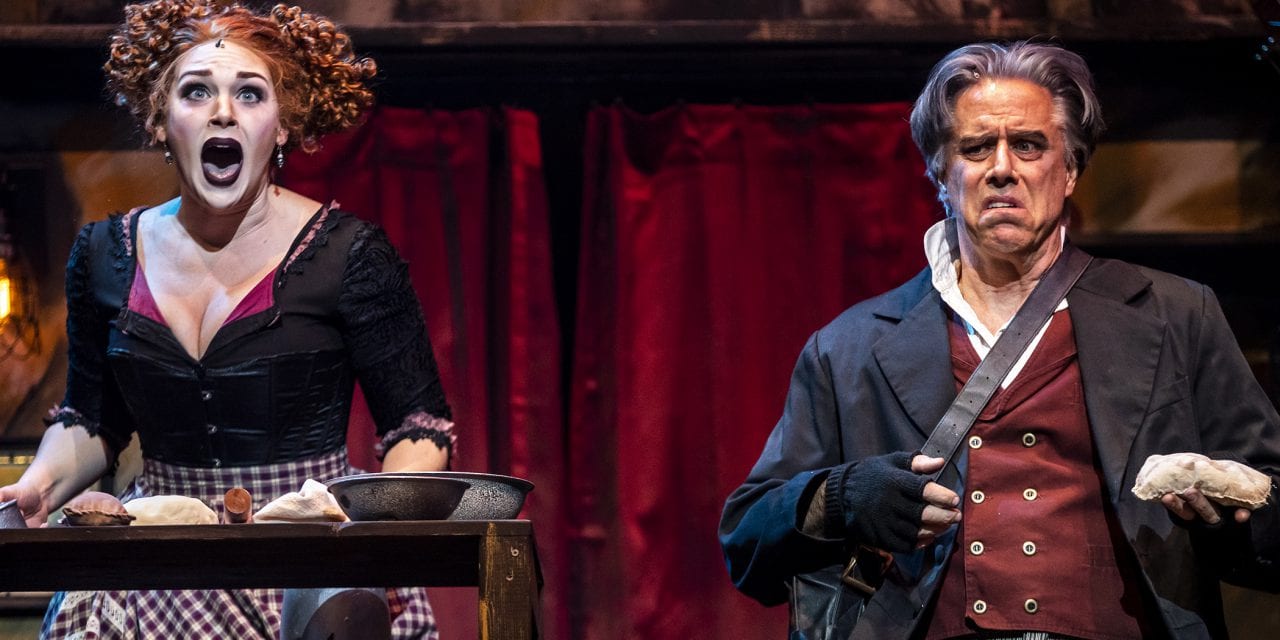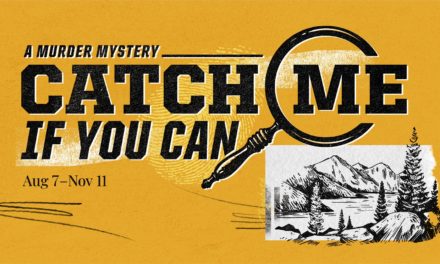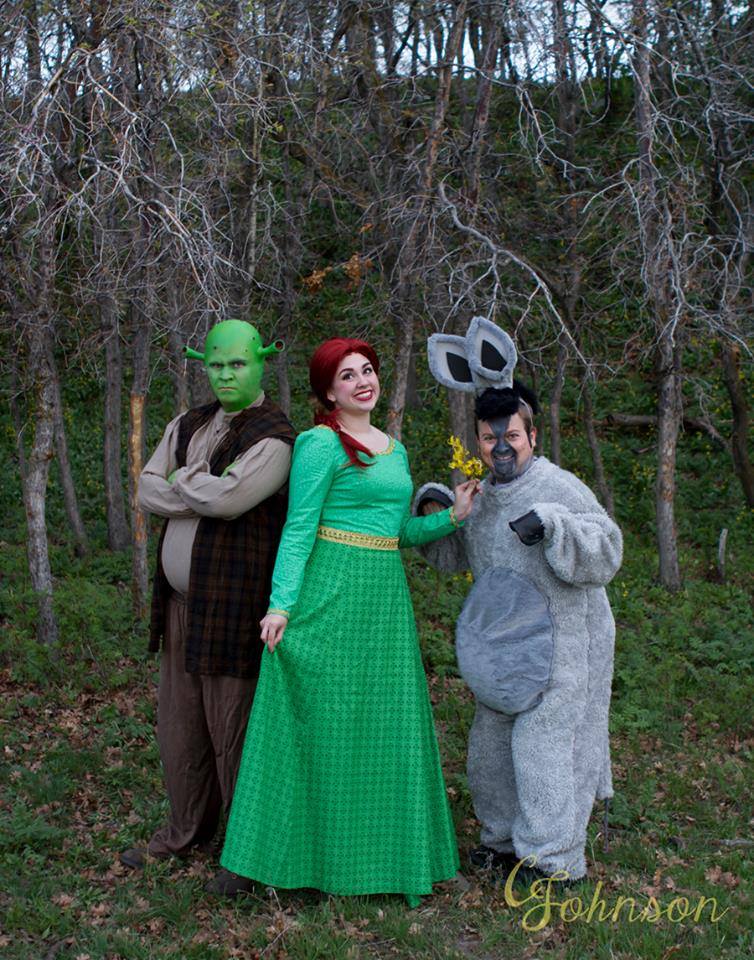OREM — Sweeney Todd: The Demon Barber of Fleet Street, with music and lyrics by Stephen Sondheim and book by Hugh Wheeler, has long been a consecrated member of the musical theater canon. Yet, perhaps due to its subject matter, it is only over the last few years that it has enjoyed a broader popularity in the Utah theater scene, encompassing a spectrum of venues from Pioneer Theatre last year (an extraordinary production) to the Heritage Theatre in Perry, where it is currently running. Hale Centre Theatre hasn’t dared add Sweeney Todd to their repertoire yet, but if Perry, Utah, can embrace it, perhaps even the Hale is no longer out of the question.

Show closes November 9, 2019.
However, popularity doesn’t make Sweeney Todd any less difficult an undertaking, and it shows wisdom on the part of Utah Repertory Theater Company that they have pulled out all the stops for this Tim Threlfall-directed production at UVU’s new Noorda Center for the Performing Arts. I have a lot of respect for the work Utah Rep does—both their programmatic choices and the impressive talent they always manage to assemble, onstage and off. Their 2016 staging of Doubt remains one of the best plays I’ve seen in Utah in recent years. So with Equity headliners and live musicians, I was eager to see a Sweeney Todd worthy of its complex material. I wish I didn’t have to tell you that I came away disappointed.
Sweeney Todd opens on the title character (played by Jeff McCarthy) returning to Victorian London after serving fifteen years in Australia “on a trumped up charge.” Having escaped to sea on a raft, he was rescued by the sailor Anthony Hope (Jadon Webster). Sweeney reopens his old tonsorial parlor in Fleet Street above a pie shop owned by Mrs. Lovett (Jacquelyne Jones). There, while using his razor to supply Mrs. Lovett with fresh meat for her pies, Sweeney plots his revenge on Judge Turpin (Brian Neal Clark) and Beadle Bamford (Kenneth Wayne), who are responsible not only for his exile, but also for the loss of his wife and daughter. Anthony soon meets Todd’s daughter, Johanna (Ellora Lattin), who is now the judge’s ward, and they plan to run away together before Turpin can make good on his plans to marry her.
Jones, as Mrs. Lovett, almost single-handedly carries the show on her back. She exudes commitment and preparation, showering the audience with an ebullient, rapid-fire succession of interesting and unpredictable choices. Vocally sophisticated and meticulously conceived, her Mrs. Lovett is a whirlwind I would need to watch more than once to fully appreciate. Jones is surrounded by many strong supporting performances: An easy, slow-boiling malice emanates from Clark’s Judge Turpin and Wayne’s Beadle, who are both more frightening than anything coming from Mrs. Lovett’s bake house. Davis Underwood’s Tobias sings an exquisite, guileless “Not While I’m Around.” Lattin, as Johanna, deftly walks the tightrope of a scream masked as beautiful singing in “Green Finch and Linnet Bird,” while Adrien Swenson’s Beggar Woman both screams and sings with equal virtuosity.
Josh Steadman and Janice Chan’s set flanks Mrs. Lovett’s shop with two towers of stacked cubicles. Inside, chorus members, lit from below, perform repetitive gestures as if operating machinery. Many productions of Sweeney Todd, taking the score’s factory whistle as inspiration, use industrial symbology to suggest how the inhabitants of mid-nineteenth-century London are consumed among the gears of a corrupt and exploitative society. Utah Rep’s interpretation emphasizes the human element in this process, packing people together in small spaces and centering them as both the victims of the machinery and the machinery itself. In theory, this interpretation is a fine approach, but I wish it came off better in practice. I appreciate the larger visual effect, but it detracts from the performances.
For example, in “The Ballad of Sweeney Todd,” the lighting makes it hard to tell who is singing each line, and eighty percent of the time I couldn’t locate the singer before they were finished. Add the fact that they all sounded like they were singing from inside a box (naturally), and what ought to have been a thrilling opening number was hamstrung by an impression of distance between the performers and the audience that the show never completely overcame.
Very unfortunately, McCarthy’s portrayal of Sweeney Todd suffers from similar issues. This is all the more disappointing because he is evidently a likable performer with a depth and breadth of professional experience that Utah Rep is to be commended for seeking out. I am sure that many in the audience have a lot of built-in goodwill and affection for him as the original Officer Lockstock in Urinetown. Furthermore, I was struck with the power of his singing voice. Deep, resonant, commanding, and losing none of its authority as it effortlessly shifts to a higher register, it should have brought me to tears.
Yet much too like the chorus members in their cubicles, McCarthy’s character depends on a collection of repetitive gestures. I did not feel chemistry or see believable interactions between him and the rest of the cast, as if his Sweeney were going through the motions in isolation. Instead of a brooding man obsessed with revenge, he comes off as affably detached. Even his spectacular voice capitulated to this lack of connection. For example, in “Epiphany,” the emotional climax of the first act, McCarthy truncated almost every note that should have been held out, preventing the tension from rising as it needed to. His final line—“And I’m full of joy!”—was technically breathtaking (and in this case the duration of the note was given its due), but by then it was too late. Without any buildup, there was no emotional or dramatic payoff. McCarthy also flubbed enough lines throughout the evening to make me wonder about his preparation. Whatever the reasons for the aura of disconnection around him, he’s a formidable performer who is clearly capable of much more than he is giving.
Ultimately, despite so many good individual performances, on the whole, Utah Rep’s Sweeney Todd feels distant and out of sync. I don’t think any of its problems are insurmountable—it may indeed improve over the course of its run as it passes through the grinder another couple of times. But until the teeth of the gears start to line up better, this production can’t manufacture enough tension for the factory whistle to thrill you as it should.
Bonus: UTBA was invited to write a guest review for Broadway World. Click here to read Maren Swenson’s review of the same production.

This review was supported by a generous grant from the Orem CARE program.




